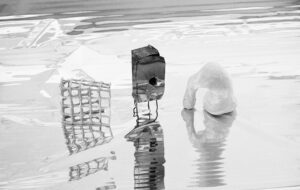|
|
||
|
In the decades since it was first released, Thomas Knoll’s digital darkroom has become a brand, a verb and a defining symbol of our image-led culture. Sam Jacob wrote about the software in Icon 093, when it marked its 20th anniversary Photoshop began life in 1987 when PhD student Thomas Knoll wrote a program that displayed grayscale images on a Macintosh Plus. Together with his brother John, who worked at George Lucas’ visual effects company Industrial Light & Magic, he developed this tool into a full image-editing program. Photoshop 1.0 was released in 1990 by Adobe, which had acquired the distribution licence. Twenty years and 12 versions later, it has become not just a powerful program but perhaps the mechanism that defines our image-saturated culture. Over the last 20 years, digital tools have changed both the way we make things and what things themselves look like. From QuarkXPress to parametricism, they have transformed the process and product of design radically, liberating us from Letraset, Cow Gum, Rotring pens and razor blades. The sudden liberty of multiple iterations, complex compound curves, stretches, scaling and overlaying – to name but a small sample of the ways we can now manipulate – is recorded in the fabric of the stuff around us. But Photoshop is different from these other digital tools. More than just a new technique, it has most profoundly changed how we look at the world. Photoshop was originally modelled as a digital darkroom, with tools like “dodge” and “burn” echoing photographers’ terminology for darkening or lightening images. But Photoshop quickly exploded its own metaphors. Its sheer power and the way it allows us to manipulate have exceeded those old crafts. Photoshop is its own medium, a verb as well as a brand. What sets it apart from other digital applications is its immediacy. Photography is a fleeting and distanced act capturing a momentary image of real life in the click of a camera’s shutter. Photoshop takes that moment and freezes it open. That moment becomes an entire world, a landscape that we can step into. It turns the fixity of photography into something liquid – the two-dimensional surface of an image developing thixotropic depth. Through its layers, filters, clone tools, its marquees and masks, its blends, smudges and blurs, its zoom-in to the ur- level pixel, its cut-and-pastes, magic wands and marching ants, we can reformulate that moment, turn it into a million other moments, add it to others, fragment it, multiply it. Photoshop decontextualises photographs from photography, takes images out of their historical moment. Instead, it invents a form of such fine-grained collage, such seamless bricolage that its own traces are invisible. When we open an image in Photoshop, the window isn’t referring to anything else, it is the image. That’s to say the image comes alive. When Belgian art/architecture group Speedism perform what they call Photoshop Operas, they expose Photoshop’s performative qualities: that one thing can become another, that something else can disappear while another appears, that saturations and perspectives can shift with hallucinogenic ease. In an era where image has assumed such overbearing significance, Photoshop is the laboratory where image power is refined into ever more lethal concentrations. It operates as a place of exchange between the world and its imaginative reconfiguration. While it sucks images in, its effects bleed from the screen back into the world. Through Photoshop we face the questions that underscore contemporary culture. From altering the size of Kate Winslet’s thighs to BP’s clumsy attempts to tweak publicity in the wake of the Deepwater Horizon oil spill, Photoshop is where truths and authenticities are manufactured and polished, where images are reflected back as though from an alternate version of reality. This article first appear in Icon 093 to mark Photoshop’s 20th anniversary |
Words Sam Jacob
Image: Adobe |
|
|
||


















